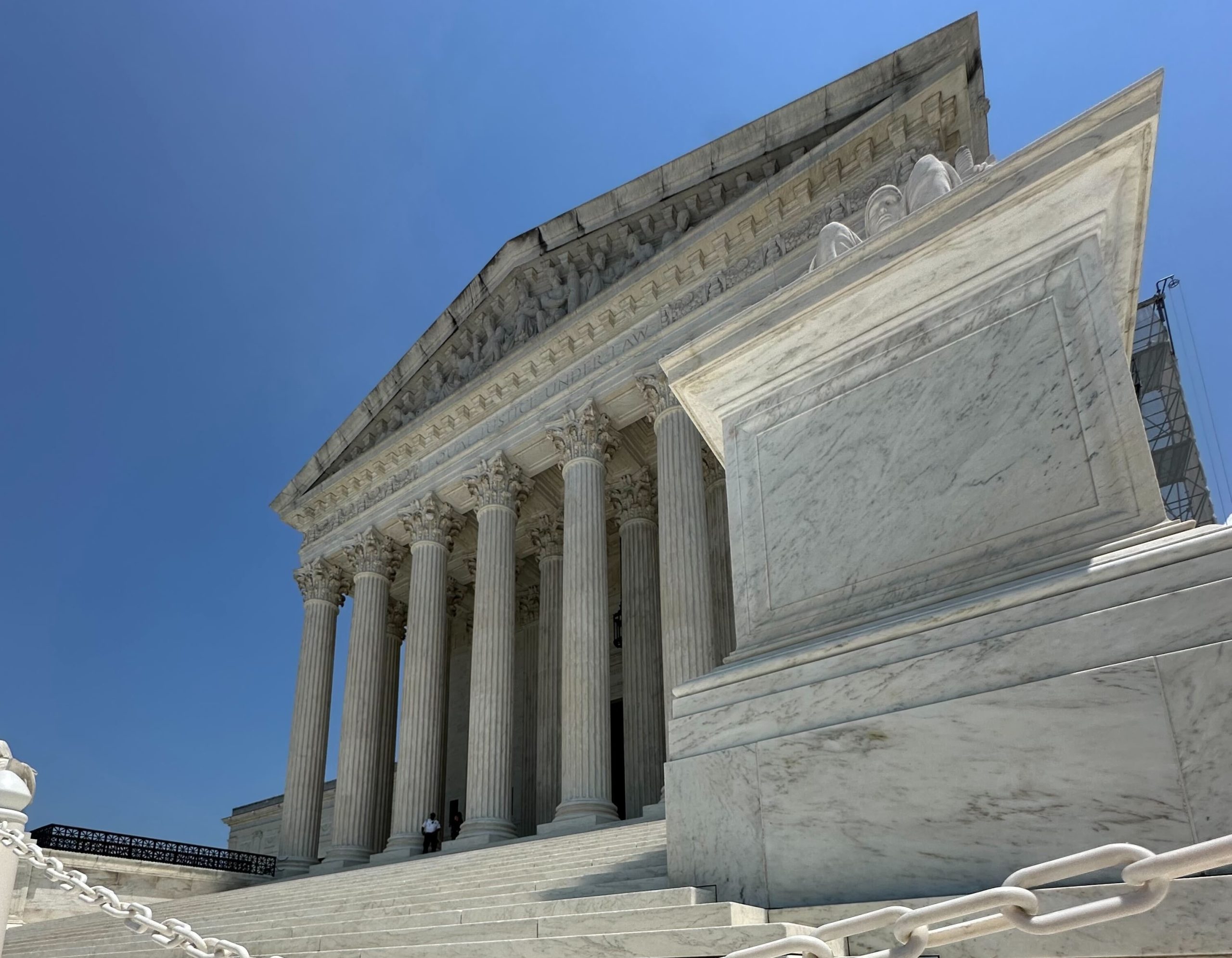The Ten Commandments return to classrooms: What will the Supreme Court do?


Texas recently became the third state in two years, following Louisiana and Arkansas, to pass a law requiring Ten Commandments displays in public school classrooms. Soon after — like the other states that had passed such a law — it was sued over this policy.
Like the complaints filed already in Louisiana and Arkansas, the lawsuit against Texas’ Ten Commandments statute was brought by a group of families from multiple religious backgrounds who believe that the law violates the First Amendment. According to the families, students in classrooms with the Ten Commandments posters “will be forcibly subjected to scriptural dictates, day in and day out,” a situation that violates “the fundamental religious-freedom principles that animated the Founding of our nation.”
The Texas challengers, as well as the families in Arkansas and Louisiana, drew on a case from 1980, Stone v. Graham, in which the Supreme Court ruled, in an unsigned decision, that a Kentucky statute requiring a copy of the Ten Commandments to be hung in every public school classroom violated the establishment clause.
Since the current battles would seem resolved by Stone, it may appear puzzling why the three states bothered passing their Ten Commandments laws in the first place, let alone defending them in court. But the foundations for that previous ruling have cracked, and it’s unclear what today’s court will do given the changed landscape.
The 5-4 opinion in Stone v. Graham centered on what’s known as the Lemon test, which came from a 1971 ruling, Lemon v. Kurtzman, which considered how to determine whether a state statute violates the establishment clause.
In that case, the court outlined a three-part test. First, a statute had to be found to have a secular purpose. Second, the statute could not promote or restrict religious beliefs or practices. And third, the statute could not foster excessive church-state entanglement (an admittedly nebulous standard).
In Stone, the majority determined Kentucky’s law violated the first prong, since the “preeminent purpose of posting the Ten Commandments” was “plainly religious in nature,” even if Kentucky lawmakers claimed they were celebrating the Ten Commandments’ historical, rather than religious, value.
As the court wrote: “The Ten Commandments are undeniably a sacred text in the Jewish and Christian faiths, and no legislative recitation of a supposed secular purpose can blind us to that fact. The Commandments do not confine themselves to arguably secular material, such as honoring one’s parents, killing or murder, adultery, stealing, false witness, and covetousness. Rather, the first part of the Commandments concerns the religious duties of believers: worshipping the Lord God alone, avoiding idolatry, not using the Lord’s name in vain, and observing the Sabbath Day.”
In the 45 years since that decision was released, the content of the Ten Commandments (obviously) hasn’t changed, but the Supreme Court’s approach to the establishment clause has.
In the 2022 case of Kennedy v. Bremerton School District, the court ruled that a school district in Washington state had violated the First Amendment rights of a football coach when it suspended him for praying on the field after games, often with students. In reaching that conclusion, the majority rejected the school district’s contention that it had to suspend him to avoid violating the establishment clause. In a 6-3 opinion, the court officially cast aside the Lemon test (once described by Justice Antonin Scalia as resembling “some ghoul in a late night horror movie”) and instructed judges to consider history and “the understanding of the Founding Fathers” when weighing establishment clause questions, instead of balancing the interests in play as prescribed by the Lemon test.
Since Stone relied on the Lemon test, and the Lemon test has now been essentially abrogated, it is uncertain what the Supreme Court will do if and when it weighs in on these latest challenges to displaying the Ten Commandments in public school classrooms.
Nevertheless, the lower courts have offered some possible clues. For example, in a June ruling, a three-judge panel of the U.S. Court of Appeals for the 5th Circuit (perhaps the most conservative circuit court in the country) upheld a district court order putting the Louisiana’s Ten Commandments law on hold. The 5th Circuit made clear that, although the Stone ruling had been undermined, “it is the Supreme Court’s ‘prerogative alone to overrule one of its precedents.’”
State officials subsequently filed a petition for the full 5th Circuit to rehear the case, arguing that the panel had wrongly subjected Louisiana’s law “to a Lemon analysis.” Louisiana officials further pointed to a conflict among the lower courts over how to assess potential establishment clause violations now that the Lemon test has been officially discarded in hopes of convincing the 5th Circuit to grant rehearing. This request is still pending.
Proponents of Ten Commandments in public schools are optimistic that, with the Lemon test relegated to the dustbin of history, their cause may well prevail. And this optimism feels especially reasonable if the court decides to adopt the reasoning of one of the two other Supreme Court rulings on the Ten Commandments, which were released on the same day in 2005.
In McCreary County v. ACLU of Kentucky, decided 5-4 in an opinion written by Justice David Souter, the court barred two counties in Kentucky from displaying the Ten Commandments in their courthouses in an opinion that featured the same kind of purpose-focused analysis used in Lemon and Stone. Specifically, the court determined that these displays did not serve a primarily secular purpose (even if government officials said they did) and defended the use of the Lemon test in such establishment clause cases.
With the Lemon test now dead, the reasoning in McCreary County would appear to be so as well. Thus, today’s court is more likely to draw on the other 2005 case, Van Orden v. Perry, in which a majority of the justices, after openly setting aside the Lemon test, allowed a Ten Commandments display at the Texas State Capitol to remain standing precisely because they felt it appropriately acknowledged the Ten Commandments’ historical significance to the United States.
The court, in an opinion by then-Chief Justice William Rehnquist, acknowledged that “the Ten Commandments are religious—they were so viewed at their inception and so remain. The monument, therefore, has religious significance. … But Moses was a lawgiver as well as a religious leader. And the Ten Commandments have an undeniable historical meaning, as the foregoing examples demonstrate. Simply having religious content or promoting a message consistent with a religious doctrine does not run afoul of the Establishment Clause.”
In his concurring opinion, Justice Stephen Breyer wrote that the display of the Ten Commandments in public schools must clear a higher legal bar “given the impressionability of the young,” but said that the establishment clause does not justify a blanket ban on such displays in public spaces.
“To reach a contrary conclusion here, based primarily upon the religious nature of the tablets’ text would, I fear, lead the law to exhibit a hostility toward religion that has no place in our Establishment Clause traditions,” he wrote.
So where does this leave us? Given the 6-3 conservative majority, along with the death of the Lemon test, it seems entirely possible that the court could uphold the legality of the Ten Commandments in public schools. At the same time, the more cautious jurisprudence of Chief Justice John Roberts and Justices Brett Kavanaugh and Amy Coney Barrett may result in a narrower holding, although it is difficult to imagine what such a holding might entail. In any event, one thing is clear: the outcome of these cases is certainly not set in stone.
Posted in Court Analysis, Potential Merits Cases